4.3 Million Units Needed By 2035 to Fuel Multifamily Demand
The future of urban living is inherently mixed-use. As population density inevitably increases and real estate prices continue to soar, more apartments are being developed in mixed-use buildings and communities. This type of development can provide the post-pandemic demands of developers, owners, renters, and workers.

Here’s a look at some of the latest multifamily trends in mixed-use development across the United States.
Multifamily Development on the Rise
There’s no denying that multifamily development is on the rise in the United States. The National Multifamily Housing Council and National Apartment Association’s latest research estimates we need to build 4.3 million units by 2035 — 600,000 to meet the current apartment shortage and an additional 3.7 million to keep up with annual demand.
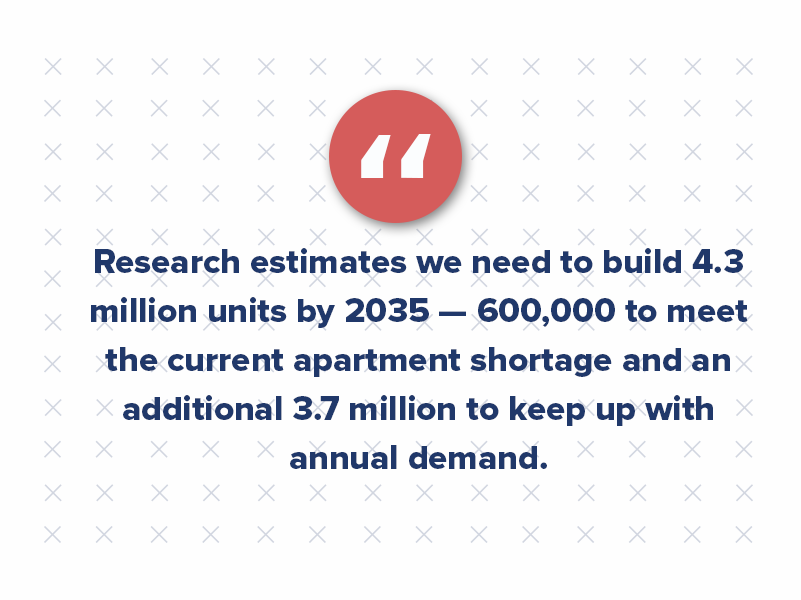
Multifamily development dropped after the Great Recession, resulting in a shortage of apartments. While development has started ramping up, demand has also been high. Multifamily units under construction are now at a historic high of 841,000 (seasonally adjusted) in June 2022.
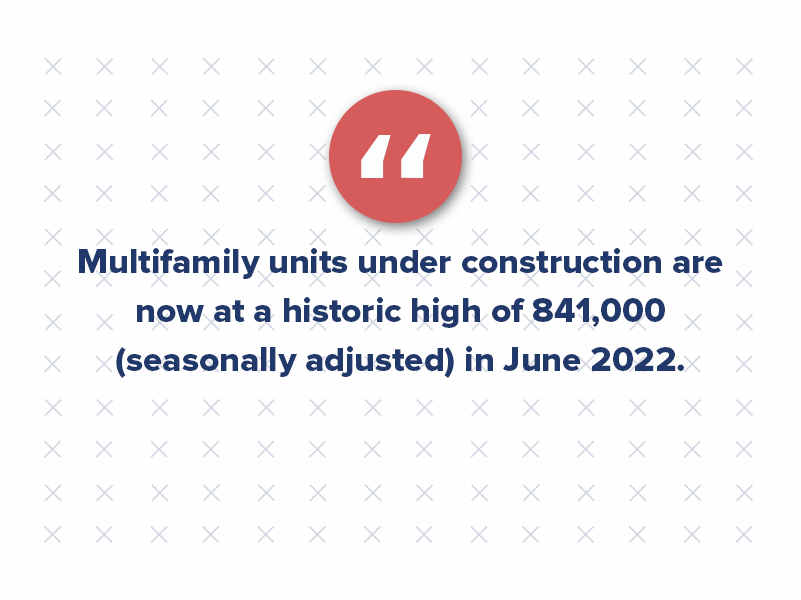
What’s driving this growth? Several factors include population growth (both domestic and foreign), increased urbanization, changing demographics (such as millennials delaying marriage and starting families later in life), and rising rental rates. All of these multifamily trends point to one thing: continued demand for multifamily housing in America’s cities.
The Shift to Mixed-Use Development
Developers are meeting this demand by shifting their focus from traditional single-use developments (i.e., residential buildings, office towers, retail centers) to mixed-use developments that combine two or more uses (i.e., residential + retail, office + residential, etc.).
Mixed-use developments have several advantages over single-use developments. For one, they’re a more efficient use of land — a crucial consideration given the premium placed on real estate in urban areas. They also tend to be more resilient to economic downturns since they provide a mix of uses that can appeal to various renters, buyers, investors, and tenants. And lastly, they create a more lively and vibrant streetscape that can contribute to the overall livability of a neighborhood or district.
Unsurprisingly, we see a shift towards mixed-use development in America’s cities. Renters’ needs have changed in recent years, particularly with the popularity of working from home during and after the pandemic. This change fueled the spike in live-work-play developments, bringing living, working, and entertainment together in a central location. In fact, 49,100 live-work-play units were completed in 2020 — the peak year for these developments.
Further, the yearly supply of live-work-play developments quadrupled in the last 10 years, going from 10,000 in 2012 to 43,700 in 2021. These communities also represent more than 10% of today’s apartments, a significant jump from 2% before 2012.
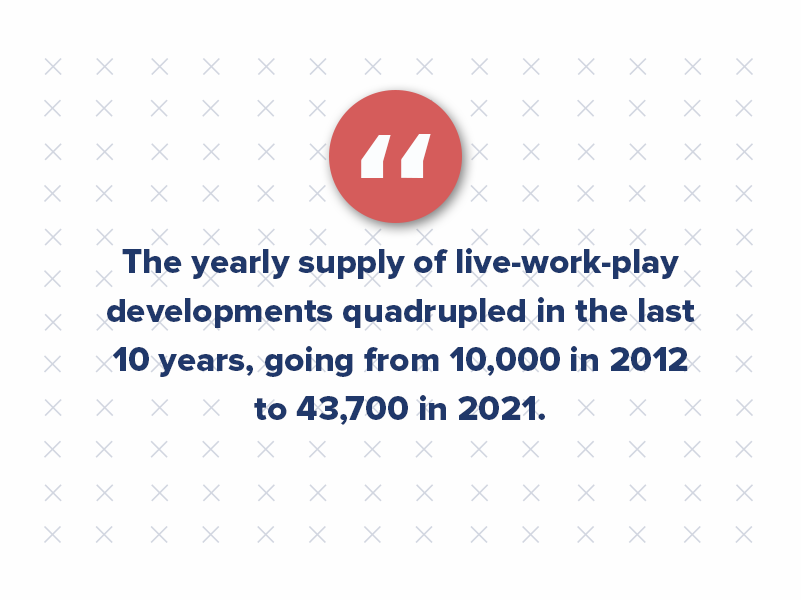
This multifamily trend is only expected to continue as developers look for ways to meet the growing demand for multifamily housing while maximizing land usage efficiency.
What’s Next for Multifamily Development?
The COVID-19 pandemic has profoundly impacted virtually every aspect of American life — and the real estate industry is no exception. The pandemic has forced us to reexamine many aspects of our built environment, from office space design to residential amenity offerings.
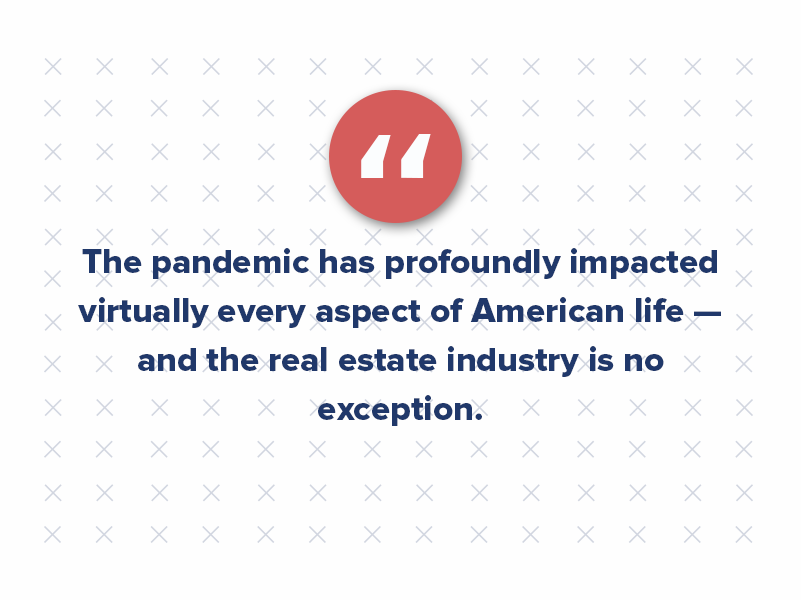
And while it’s still too early to say definitively what changes will stick around long term, some emerging multifamily trends suggest the future for development in America’s cities.
One such trend is an increased focus on health and wellness amenities — such as outdoor spaces for exercise and recreation, contactless access control systems, air filtration systems, and on-site health clinics — as renters emphasize their health and well-being more.
Another multifamily trend is shifting from central business districts towards suburban locations as workers embrace remote work arrangements and seek out larger living spaces outside of dense urban areas. Lastly, we’re seeing a renewed interest in micro units and other small living spaces as renters seek affordability and flexibility in their housing arrangements.
Reexamining Multifamily Trends to Plan for the Future of Development
In the wake of a rapidly evolving housing market, multifamily development is surging across the breadth of the United States. Developers are responding to a burgeoning demand for rental spaces, a call that is redefining the fabric of real estate planning and design.
A significant paradigm shift can be seen as the industry transitions from conventional single-use edifices to mixed-use designs. These novel structures weave together various functionalities, marrying residential with commercial or recreational spaces. The drive behind this movement isn’t just architectural innovation; it’s a keen attempt to harness land resources optimally. With urban areas grappling with space constraints, the multifamily sector’s pivot to mixed-use developments embodies a vision that champions both utility and aesthetic appeal, a trajectory poised to shape the architectural lexicon in the ensuing years.
As the world grappled with the unprecedented challenges posed by the COVID-19 pandemic, no facet of human life remained untouched, and the real estate sector found itself at a significant crossroads. The pandemic catalyzed a global rethinking of how we perceive and interact with our physical spaces. Within the U.S., the upheaval has sparked introspection into our constructed environments’ design, purpose, and adaptability, with the multifamily real estate segment experiencing its share of transformative ripples.
While forecasting the long-term implications of these shifts might be speculative at this juncture, certain multifamily trends are beginning to crystallize. These nascent patterns provide a tantalizing glimpse into the potential future of multifamily constructions, especially within America’s bustling metropolitan landscapes.

Here’s Why 1 in 4 Millennial Renters Claim They Will ‘Rent Forever’
According to Census data, the millennial homeownership rate is currently 48.6%. That’s a significant drop from the ownership rates of previous generations.
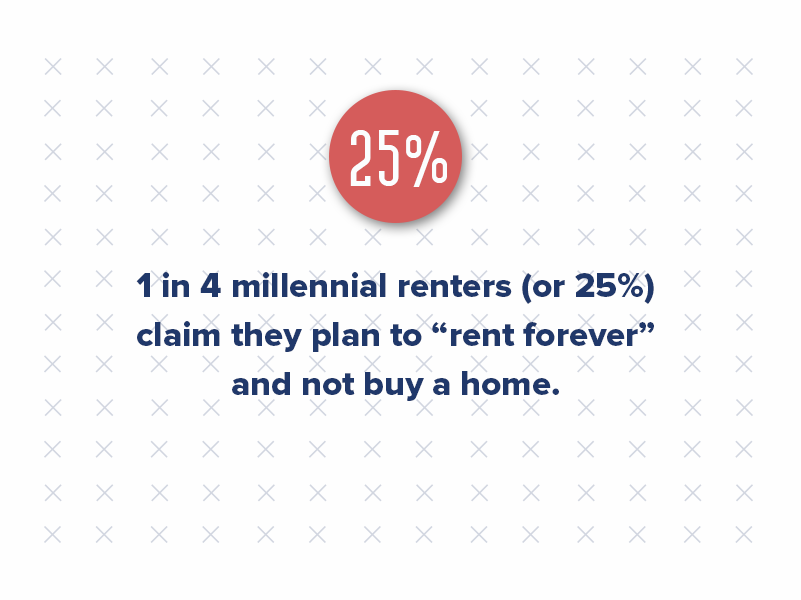
And nearly 25% of millennials said they planned always to rent and not buy a home. Millennials entered the prime homebuying age amid the COVID-19 pandemic. At the same time, this generation overtook baby boomers as America’s largest generation.
So, what’s behind this trend? And what impact does it have on the rental market? Let’s take a closer look.
What’s driving millennial renters?
Several factors have contributed to the decrease in millennial homeownership. For one, the Great Recession left many millennials saddled with debt and uncertain about their financial future. As a result, many have chosen to rent instead of buy to keep their monthly expenses low.
In addition, the cost of living in many parts of the country has increased faster than wages, making it difficult for millennials to save up for a down payment on a home. And with student loan debt still weighing heavily on many young adults, buying a house is often seen as an unaffordable luxury.
Giving millennials what they want
The future of multifamily apartments relies heavily on Gen Z and millennial renters. The impact they’re having on the economy is paramount.
Millennials are renting longer and waiting to get married. Their lifestyles drive the amenities, which are now heavily focused on bike storage, cyber cafes, resort-style pools, and dog parks. And they are no strangers to spending 60% of their income on housing — anything to be in the best locations.
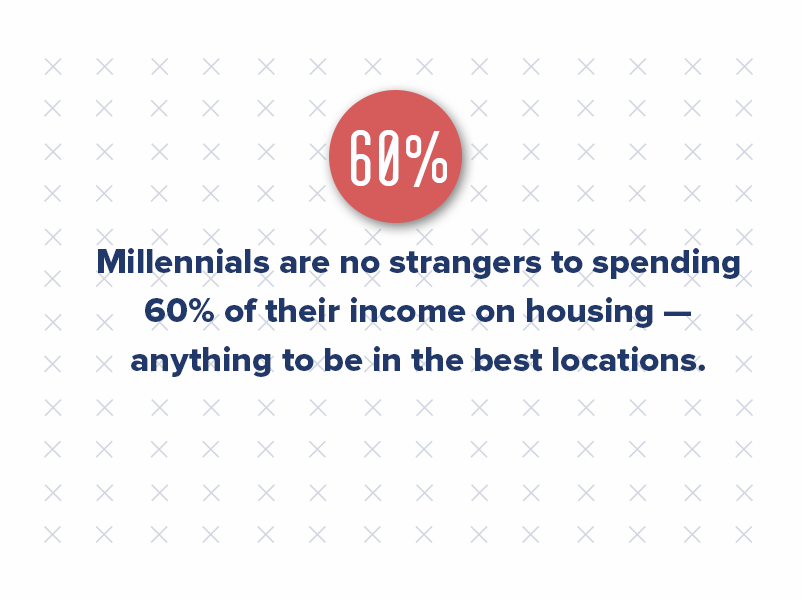
So, what is the multifamily industry doing to target this coveted demographic? These lifestyle choices have largely altered multifamily development. Here are a few key trends being implemented throughout new construction projects to appeal to the millennial demographic:
- Apartments are getting smaller, common areas are getting larger. Developers are doing more pocket courtyards and green spaces — all beautifully designed with Wi-Fi access.
- More amenities. Millennials love bells and whistles, from interior finishes to reserved parking spots.
- Pet amenities. This demographic loves their pets, and they’re looking for amenities that cater to their furry friends: dog parks, pet daycare, washing and grooming stations, etc.
- Walkability. This is increasingly important to the millennial demographic, who are increasingly forgoing cars for public transportation.
- Parking. Because more millennials are opting for bikes and public transportation, there is also a drastic reduction in the need for parking, which developers are taking into account for new projects.
What does this multifamily trend mean for the rental market?
In short, demand for rentals is likely to continue to increase. As more millennials marry and start their families, they’ll need larger living spaces than they do currently. And since student loans and other debts will still burden most, renting will remain the more affordable option for many years.
The decrease in millennial homeownership is a ripple effect on the rental market. As more young adults choose to rent instead of buy, demand for rentals will likely continue to rise in the coming years. Property managers and leasing agents should keep this trend in mind when marketing their units to potential renters.
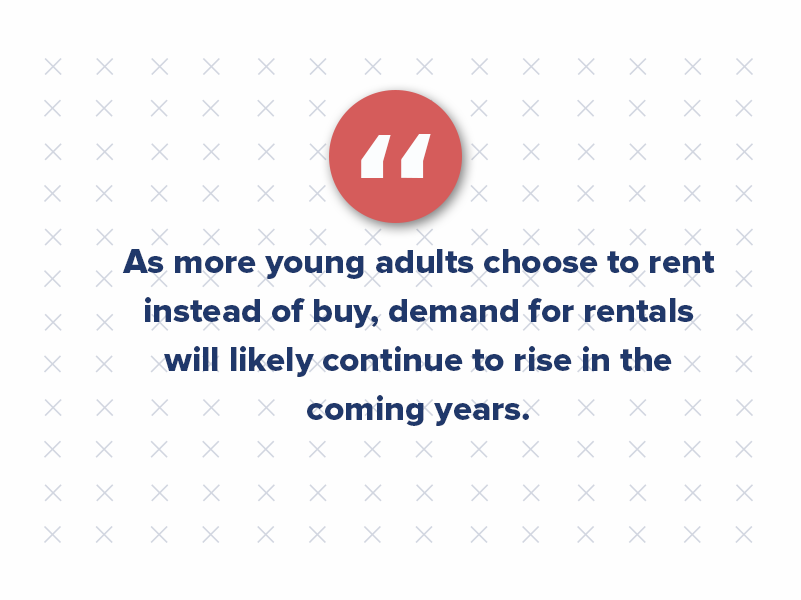
And this delay in homeownership is a multifamily trend that will not change anytime soon. In fact, Gen Z renters are poised to rent longer than generations before them, often by choice. If you compare it to the millennial generation, who waited longer to get married and start a family, Gen Z is expected to follow a similar path. This trend will undoubtedly extend their rental lifetime well into their professional years.
In the years ahead, it will be paramount for industry leaders to alter how they market to millennials and the up-and-coming Gen Z renters. These generations prefer to communicate and search for apartments differently than their parents, so it will be paramount for property managers, agents, and multifamily marketers to take note of this change.
How to Convert Apartment Leads Into Leases Using Your CRM
Sales are all about converting apartment leads into residents. And a CRM (customer relationship management) system can be an invaluable tool for making that happen for your property.
You can improve your chances of converting leads into leases by tracking apartment leads and resident interactions. Key features to look for in a CRM include apartment lead management, multifamily email marketing automation, and contact management.

Apartment lead management is important for monitoring prospects and keeping track of their progress. Multifamily email marketing automation can help you nurture leads with automated email campaigns. And contact management can help you keep track of resident interactions and follow up with them effectively.
When it comes to multifamily marketing, these CRM features can be extremely helpful in booking more property tours. By using a CRM system, you can better manage your apartment leads, automate your email multifamily marketing, and keep track of resident interactions. This will all lead to more sales and a higher conversion rate.
That being said, not all CRMs are created equal. Some CRM features are more helpful than others when it comes to conversions.
Here is a closer look at what our team views as the most important CRM features for conversions (and what we use every day in our multifamily marketing efforts!):
1. Customizable lead capture forms
A good CRM will allow you to create custom lead capture forms that fit your needs. This is important because you want to ensure you’re capturing all the information you need from potential customers to follow up with them effectively.
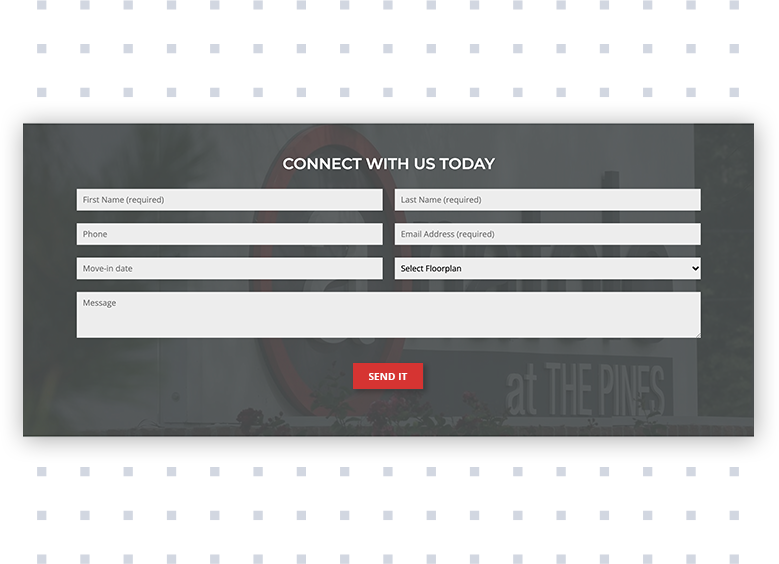
Custom lead capture forms are online forms that allow you to gather leads for your multifamily property. By collecting contact information and other key data points, you can nurture leads through the sales process and ultimately convert them into residents.
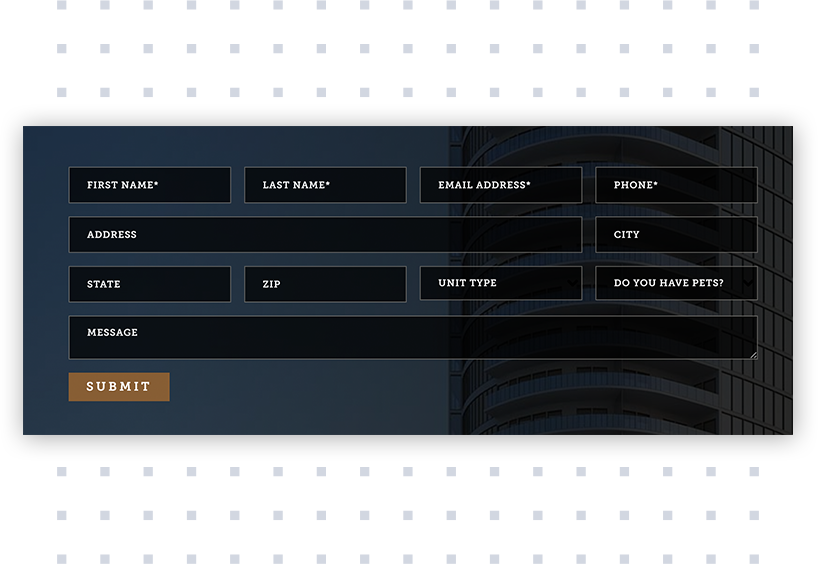
There are several features that can be included on custom lead capture forms, but some of the most important for conversions include the following:
- Property type: By asking leads what type of multifamily property they’re interested in (e.g., apartments, townhomes, etc.), you can ensure that you’re marketing to the right audience.
- Budget: Collecting budget information helps you qualify leads and determine whether they can afford your multifamily property.
- Location: Knowing where your apartment leads are interested in living helps you target your multifamily marketing efforts and ensure that you provide relevant information.
- Contact information: To follow up with leads, you’ll need to collect their contact information (e.g., email address, phone number, etc.).
By including these key data points on your custom lead capture form, you can increase the likelihood of conversion by ensuring that you’re marketing to the right audience and providing relevant information.
2. Lead scoring and grading
A lead scoring system will help you determine the most promising leads, so you can focus your energy on converting them. This is important because it allows you to prioritize your time and resources and increase your chances of making a sale.
If you have access or interest, marketing automation software offers lead scoring to qualify your apartment leads. Lead scoring involves tracking any lead in your CRM across your multifamily website. With lead scoring, you can ascribe value to different blogs or page views, offers or email interactions. When a lead reaches a certain score, decided on by your team, they become sales qualified.
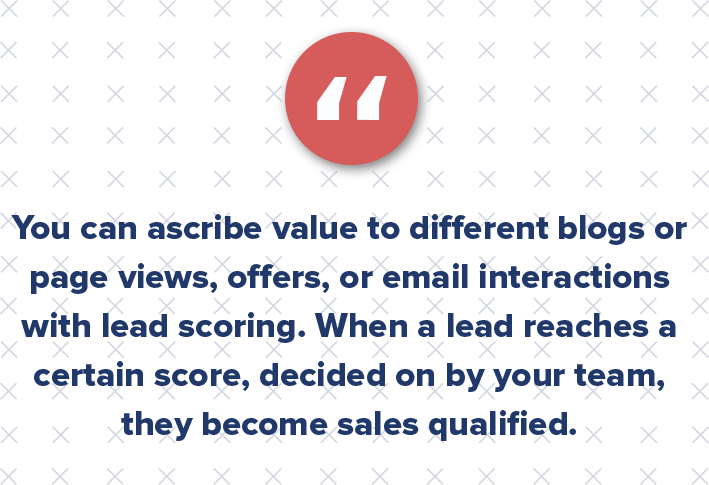
3. Automated follow-up
Automated follow-up is one of the most valuable features a CRM can offer. Once an apartment lead has been captured, it’s important to follow up with them as quickly as possible. An automated follow-up system will ensure no potential sale slips through the cracks. It allows you to set up automatic email or phone reminders to follow up with apartment leads, so you never miss an opportunity to convert them.
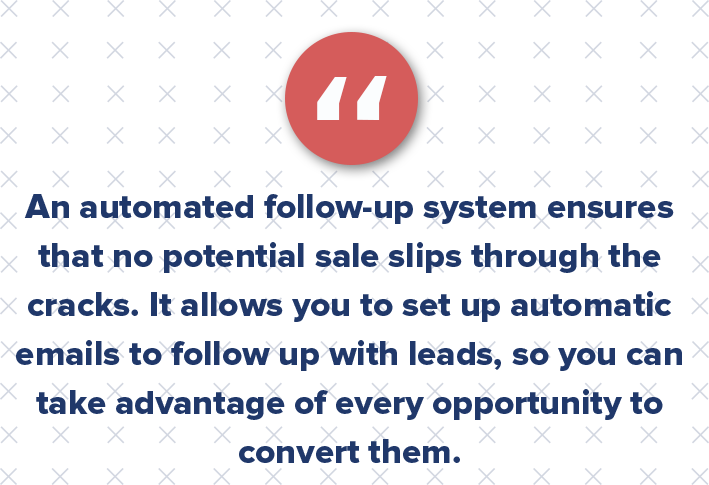
For example, you will want to set up automated follow-up emails for anyone who fills out a form on your multifamily website to book a tour, contact your leasing team, or if they download any of your free resources.
Don’t forget to use personalization tokens in the body copy of your email to ensure your message is catered to the specific resident. However, be cautious with personalizing your subject lines, as recent studies found that emails with personalized subject lines get lower open rates (18.79%) than those with generic ones (22.14%). Further, the personalized subject line click-through rate was 1.74% versus 2.74%.
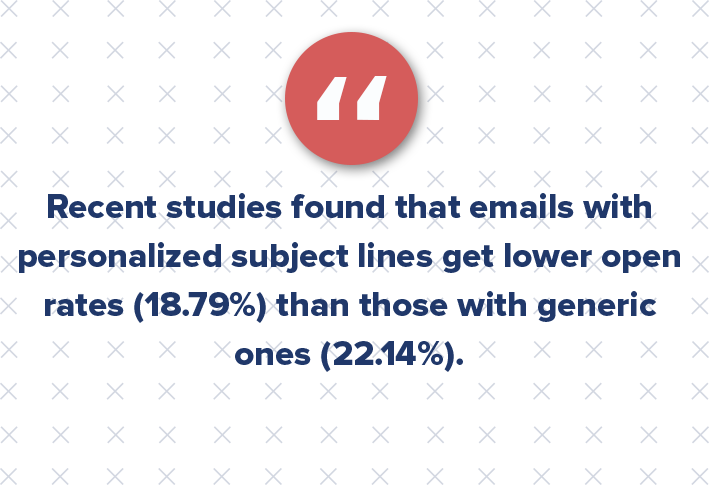
4. Detailed customer profiles (AKA get to know your prospects)
The more information you have about a resident, the better equipped you are to provide them with what they need and want. A detailed resident profile will include contact information to lease history and interests.
This profile can also help you refine your resident buyer persona. Potential residents should never be looked at as an entry in a database or a contact in a CRM. Multifamily marketing messaging is meant to connect and provide powerful content that is useful and relevant to their problems. All the while, it’s helping transform your properties through real and honest data.
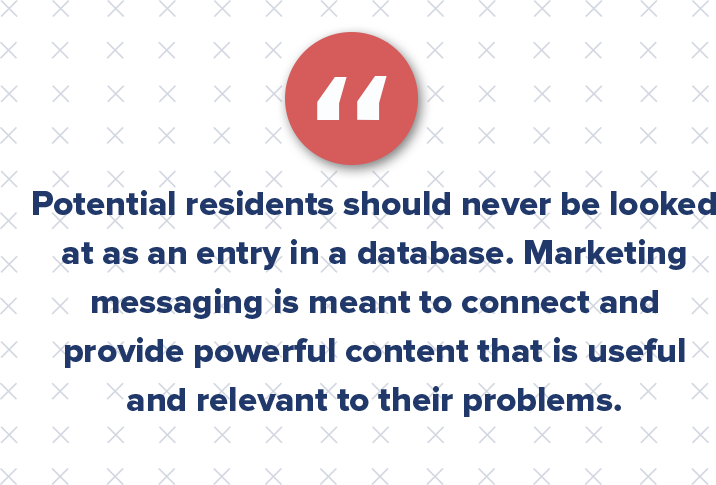
What renters perceive is reality to them, which is why it is important to ensure your residents feel comfortable and welcome at your property. This requires properties to anticipate the needs of community members, and the best way to do that is to get to know them.
Qualifying your apartment leads to increase conversions
Just because a lead is sales-qualified does not mean they are a good fit. As a multifamily marketer, you’ll likely never know if a lead meets sales’ needs. That requires sales to engage with the lead first. Instead, it’s imperative to use lead qualification methods to ensure your apartment leads are qualified from a multifamily marketing perspective and ease sales jobs on the rest.
With the right CRM tool and marketing automation software, you can more easily determine who your hot leads are and take action, so no sales fall through the cracks. Or, you can use this information to nurture those leads to eventually become leases. Ultimately, with the right tools, you’ll be well on achieving your leasing goals.


